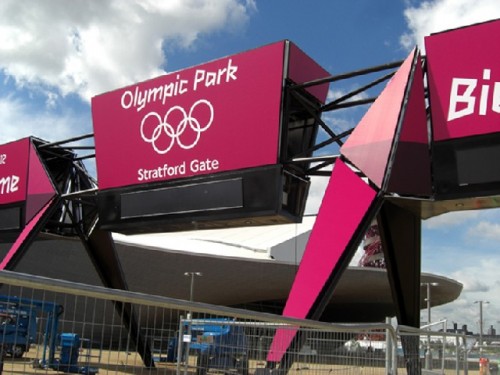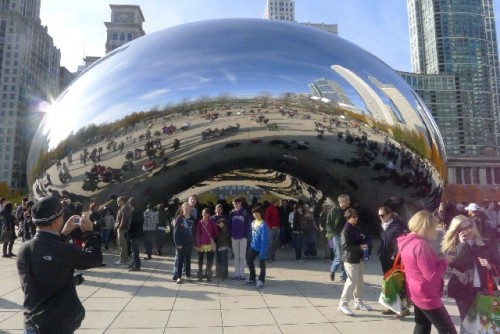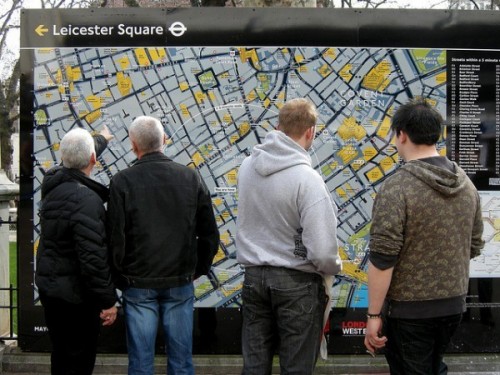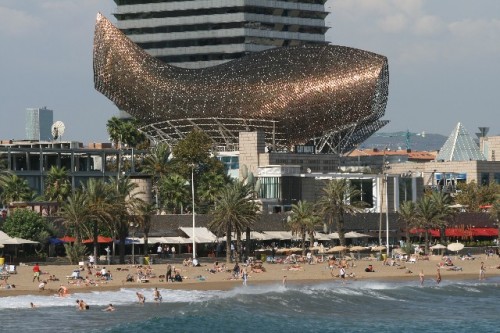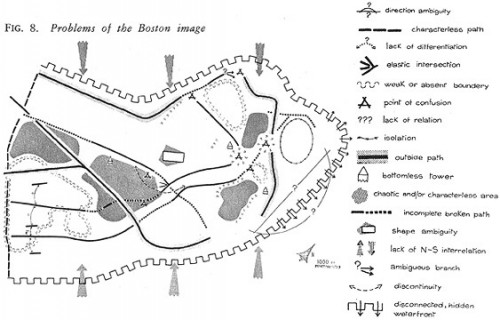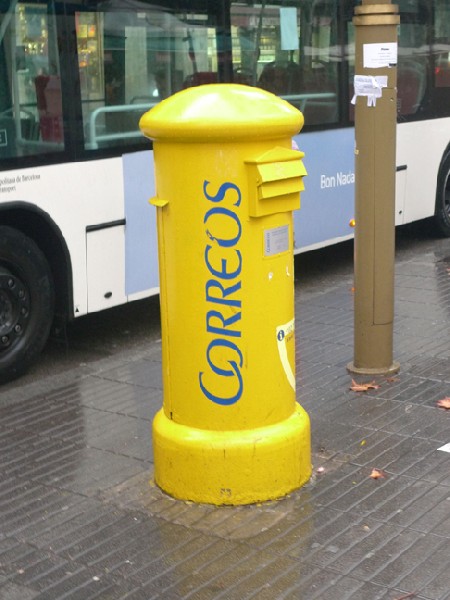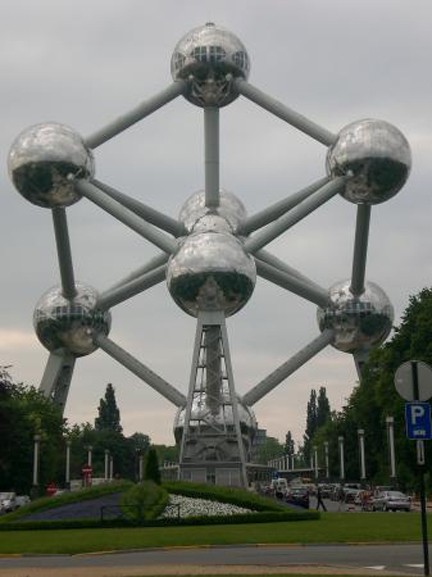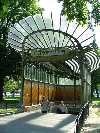Urban Branding in the Civic Environment
Creating the Essence of A Sense of Place
By: Mark Favermann - Oct 03, 2012
As the recent London Olympics demonstrated, the major organizing device for the Games was what is referred to as “The Look of the Games.” Everything from event tickets to athlete bibs to athlete villages to sports venue enhancements to signage was part of this “brand effort.”
This approach has been significantly instituted since the 1968 Mexico City Games. It has been more or less applied over the last 44 years. London did a particularly good job visually connecting the events and the metropolitan and regional environment. This effort can be considered a major if not temporary effort in the establishment and enhancement of the civic environment as brand. It is urban branding.
In an urban design sense, urban branding or community branding is an establishment of image vitality and a reinforcement of civic or institutional identity. Our greatest cities and regions around the world exhibit this quality strongly.
Why is Paris unique? The Eiffel Tower? The Avenue des Champs-Élysées? The architecture? What makes London, London? Big Ben? The taxis? The red double-decker buses? Washington, D.C. says government, nation’s capitol while New York says skyscrapers, economics and entertainment energy. Rome speaks to ancient structures in a modern vital context. With its multiple church spires, its gigantic emperor’s palace, its Czech Cubism architecture and its quaint Old Town, Prague speaks to its 800 year old patinated existence.
The City of Boston is represented by the Old North Church, Old Ironsides, Boston Common, Fenway Park, The Esplanade along the Charles River and maybe the Citgo Sign. Few of the many suburbs surrounding Boston evoke a clear personality.
Around the world, other emerging cities and new towns have little or no personality or character. Often awkwardly expanding, many growing cities in China and third world countries are expanding without a sense of place. In China, real effort is being made to develop and build contemporary structures to give identity to inflating population centers. New towns in many parts of the world have little or no character. Prime examples in Egypt are unsuccessful mergers of haves and have-nots in new town development.
Shanty towns have swollen hodge-podge in Brazil as well as other South American and Central American countries. This is also true throughout cities in African countries. Though somewhat dissimilar, this situation is not limited to only outside North America.
In each of these cases, the communities have character, even a perceptible personality. But this is a negative civic statement, a negative urban brand. This is not about attracting businesses or tourism but about civic disfunctionality. Here place may be housing but not comfortable or appealing homes.
In the United States, the fastest growing metropolitan area in Florida and in the US overall is The Villages, a place of faux suburban entities with shopping strips and golf/recreational facilities joined together by one developer over several counties. Do hundreds of similar new village constructs create a city? Similarly, Virginia Beach is the largest city in Virginia. But with the exception of the beautiful Atlantic Ocean beach defining one edge of it, there is really no there there.
As the world becomes more and more urbanized, metropolized and literally city-centered, there is a clear need for a city to have the ability to differentiate itself, to give itself visible distinction or individual character. This megacharacter-building underscores the notion of civic pride and pride of place. The set of tools necessary to create this quality is the concept of urban branding.
Urban Branding is the application of large-scale distinctive markers to civic environments, corporate precincts, institutions, and sporting and cultural events to develop identity and to reinforce image. Urban Branding not only can incorporate logos but it includes secondary and tertiary identification elements such as visual themes, lighting, colors, symbolism and typography. It makes use of such diverse elements as gateways, entrances, signage, paving, fences, public art, street furniture, monuments, landscapes and streetscapes.
Integrating multiple design disciplines and creative tools, urban branding can create a sense of arrival, a sense of shared experience, and a true sense of place. This notion is built by the integrated skills and techniques from the urban designer, the landscape architect, the industrial designer, the environmental graphic designer and the public artist.
The civic results can be most ideally, creatively conducted in symphonic concert, but are more likely to be developed in something more akin to additive harmonic jazz improvisations. Planning is often elegant and very good while sometimes unplanned accidents can be surprisingly great. Perhaps, the planned for unplanned surprises are the best?
The late visionary urban designer Kevin Lynch (1918-1984) in his seminal books, The Image of the City and Good City Form, spoke to the idea of codifying what gives great form and thus aesthetic shape and structure to an urban setting. Lynch looked at the connections between human values and the physical forms of cities.
In The Image of the City, Lynch visually organizes the urban area into discernable strategic elements. These speak to visual as well as organizational aspects of urban recognition. Lynch addresses the physical patterning and arrangement of buildings and structures, gateways or entrance points, nodes or crossroads, focal points, vistas and even quality of details.
As with other urban thinkers, scale is another of Lynch’s concerns. Appropriate scale is the system of measurement and harmonic proportion. Scale in architecture and the built environment is a quality that relates structures and forms to our human ability of comprehension.
This is how we individually fit into our environment. It keeps the city’s component parts in a similar context, a spatial rhythm. This includes our field of vision from intimate scale to urban scale to monumental scale. All of this relates strongly to the notion and defining of urban branding.
Kevin Lynch viewed the city as three distinct theoretical constructs: (1) a cosmic (magical) ceremonial center; (2) a machine or often temporary city; and (3) a city as organism. These gave normative structures to the history and growth of cities. All three forms needed various forms of enhancement to underscore their purpose and literal functioning. This allowed each urban area to be more readily humane.
In a different way, Lynch embraces the need for a metropolitan area to have a distinct character. He even sees neighborhoods having an individual civic presence. Thus, Lynch’s prescient thought-process set the foundation for urban branding.
Other provocative urban thinkers made reference to aspects of urban branding as well. In their own ways, urban critic Lewis Mumford (1895-1990), master planner Edmund Bacon (1910-2005), urban visionary Konstantinos Apostolos Doxiadis (1914-1975) and philosopher/critic Walter Benjamin (1892-1940) saw urban branding elements as tools or kits to enhance the urban experience. These were translated into functional aesthetics, referencing the best of the historic past or understanding the layers of meaning applied.
Urban branding both adds texture and image reinforcement to the urban fabric. In older more established cities, mostly in Europe, this fabric is often kept in good repair with seamless patching and threads carefully darned. In emerging metropolitan areas, there is a clear vital need to give pattern and functional enhancement to the civic environment. This is what urban branding provides.
Urban branding underscores a sense of arrival, a sense of shared experience--both visual and environmental, and a sense of place. By use of such tools as thoughtful wayfinding, signage, green spaces, street furniture amenities and public art, urban branding can underscore a civic experience and give visual and even symbolic meaning to a specific location.
Elements like gateways, bench systems, kiosks, bicycle racks, bus shelters, lighting, water fountains and informational as well as directional markers can illustrate an urban setting and underscore its character and vitality. What urban branding does is to help make a civic environment positively whole.
The flexibility of urban branding allows it to be maintained or evolve. There are literally scores of urban branding elements that enhance, reinforce or actually define a place. These physical elements can enliven each other as well as add up together to create a meaningful whole.
Civic and institutional entities can use urban branding to strategically define themselves as unique places. In a civic sense, this underscores tourism, residential appeal, desired retail experience and magnetic appeal. In an institutional sense, this applies to strategic identity that can translate into increased and continual image prestige and brand awareness.
Particular sensitive applications of landscaping (both hard and soft) and public art can add to quality of life enhancement. Appropriate wayfinding and signage can assist with the feeling of well-being and comfort in terms of directional, informational and safety environmental treatments. In addition, urban branding can be sustainable as well as reinforce accessibility.
In a basic way, urban branding is how a civic or institutional entity defines themselves. It is about the establishment of character of place or setting. If the notion of personality can be somehow applied to a metropolitan area, city, neighborhood or even university, urban branding would be the methodology and set of tools to accomplish this.
Wonderful examples of established urban branding elements notably exist. Architect/Designer Hector Guimard’s wonderful Art Nouveau Metro station entrances are sprinkled throughout Paris. La Rambla in the heart of Barcelona is a pedestrian promenade that expresses the joy of living in this Catalonian metropolis. Antoni Gaudi’s architecture underscores this as well there.
As the cable cars and Golden Gate Bridge illustrate and illuminate San Francisco, so does Architect Eero Saarinen’s stupendous Saint Louis Arch landmarks the city on the Mississippi River. Chicago’s magnificent Millennium Park is a gathering place for thousands throughout the year. Though these are mostly grand gestures, in other places, there are many scaled down urban branding examples as well.
In Amsterdam, the street furniture—benches, trash bins and light poles in the Museum District are all consistent in color materials and form. Traditionally shaped informational kiosks in Prague add to the vitality of the urban space. In Copenhagen, there is play equipment for children and adults in retail and food vending areas.
In London, there is a new Legible London signage and wayfinding program to make visitors more comfortable to get around and to reinforce a sense of place. And these are only a few examples of more discrete urban branding elements.
So urban branding is about scale—all levels of scale from the intimate to the monumental, from the individual to the vast. Today, urban branding needs to be part of any master plan, a literal blueprint for future city or regional development, renovation, restoration, reconfiguration and/or expansion/contraction.
Without it, the master plan is much less than whole. Urban branding is the system of connections that establish the quality and unique definition of a master plan. By its strategically integrated elements, urban branding establishes the city, the neighborhood, the campus or general civic environment as not only a place for future alteration but a place of consistent and continued identity and reinforced image.
This must not be in a publicity or advertising sense superficially “a product branding exercise.” It is totally different than product placement or differentiation through labeling. This is no inner city marketing venture. Nor is this just about colorful packaging or logo-hype. But instead, this is an integrated effort using strategically placed elements building together a shared sense of experience both visual as well as environmental.
Urban branding is an application of strategic urban design elements that add comfort, information and even provocative surprise to the civic structure.
Also, serious integration of urban branding with new technologies and multimodal transportation will be 21st Century urban design and planning goals. New technologies will enhance such areas as wayfinding and narrative dissemination of historical and cultural information. Transportation models will be delivery systems for residents and visitors to metropolitan areas. And the various modes of transportation are flexible platforms of urban branding.
The creative process to achieve urban branding will be a function of political or corporate structure and specific metropolitan site. There are several models to choose from including incremental, strategically large to subtle reinforcement. Though urban designers, planners and landscape architects may give lip-service to creating or at least making room for urban branding elements, the talk is often much greater than the walk. Having urban designers, planners and landscape architects agree is similar to herding cats. Real and often sensitive leadership must direct the effort. Therefore, making the urban branding process integrated with a master plan makes the most sense.
Aspects of the process can vary greatly. Some governmental enties may have the technicians and the experts who need to convince the political hierarchy or authority. While some urban branding organization structures have a more public process, private development entities and institutional authorities are much less transparent. A recent case in point is the future world's largest Ferris Wheel approved for Staten Island, New York City's less visited and smallest burough. Here public process allowed for a major new urban branding element to be developed.
Urban branding is not a necessarily new concept. However, the actual term and its definition are. For decades, urban designers and city planners have tried to introduce appropriately scaled streetscape elements into the urban mix. today, there is more and more an effort to focus upon smaller towns and even neighborhoods. Equal parts civic marketing, goals setting, community communication and identification, this enhancement effort is referred to as community branding.
Too often, they were afterthoughts, punctuation marks on too large a civic narrative. They were also often tried out experimentally or temporarily, not as permanent concepts. Or they were homogenization and put everywhere in a city without a sense of site appropriateness. Now is a time that urban branding must be implemented as a humanizing and humane urban design function.
In order for this to happen, governmental officials, civic leaders, developers, urban designers and planners must be committed to the creative integration of the pallet of elements that functionally enhances the urban experience. This is design with a capital “D” and a lower case “d” that work interactively within the urban design and planning context. Urban branding underscores the very richness of urbanity and thus the enhancement of humanity.


